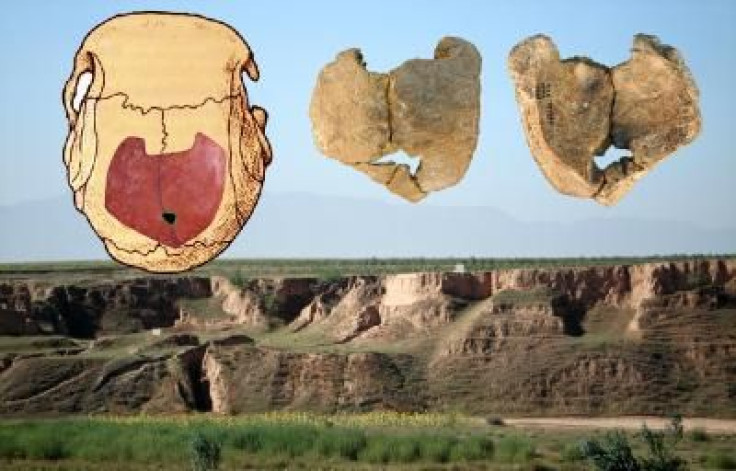Inbreeding Was Common Among Early Human Ancestors

Inbreeding people were fairly common among early humans- a fossil discovery from China adds to growing evidence of genetic mutations in early societies.
Researchers deduced this from pieces of an early human's skull from roughly 100,000 years ago, which was recovered in 1977 from a site called Xujiayao in the Nihewan Basin of northern China. The skull's strange shape indicates a now-rare congenital deformation that can occur in the children of inbreeding people.
The findings were published in the journal PLOS One on March 18 by researchers from the Chinese Academy of Sciences and Washington University in St. Louis.
The skull fossil, called Xujiayao 11, has a hole at the top of the brain case indicating an enlarged parietal foramen (EPF), which is similar to a condition caused by a rare genetic mutation in modern humans. That genetic mutation hampers normal bone formation during the first five months of fetal development, preventing the closure of small holes in back of the fetal brain case. Today, this condition occurs in about one out of every 25,000 human births.
Congenital deformities like EPF are often associated with cognitive deficits, though the researchers assume that any neurological deficits in the person who became Xujiayao 11 were relatively minor. The fossil is from someone who lived into middle age, which suggests that the individual functioned well enough to survive from day to day.
Fossil evidence of humans from throughout the Pleistocene era (about 2.6 million to 12,000 years ago) indicates an unusually high occurrence of genetic abnormalities like EPF, suggesting that inbreeding people were pervasive in early human history.
"The probability of finding one of these abnormalities in the small available sample of human fossils is very low, and the cumulative probability of finding so many is exceedingly small," said study co-author Erik Trinkaus of the Washington University in St. Louis in a statement.
Genetic diversity is important to the overall health of a population- the wider a community's gene pool, the less likely that individuals will inbreed and have children with genetic abnormalities.
The researchers believe that the abundance of abnormalities in remains from Pleistocene-era people indicates the strong influence of inbreeding and genetic instability on early human population dynamics
"These populations were probably relatively isolated, very small and, as a consequence, fairly inbred," said Trinkhaus to Livescience.
The study concludes that "it remains unclear, and probably untestable, to what extent these populations were inbred," though it seems likely that inbreeding people were fairly common until the Neolithic Revolution roughly 12,000 years ago, when agricultural settlements led to larger, more genetically stable populations.



























